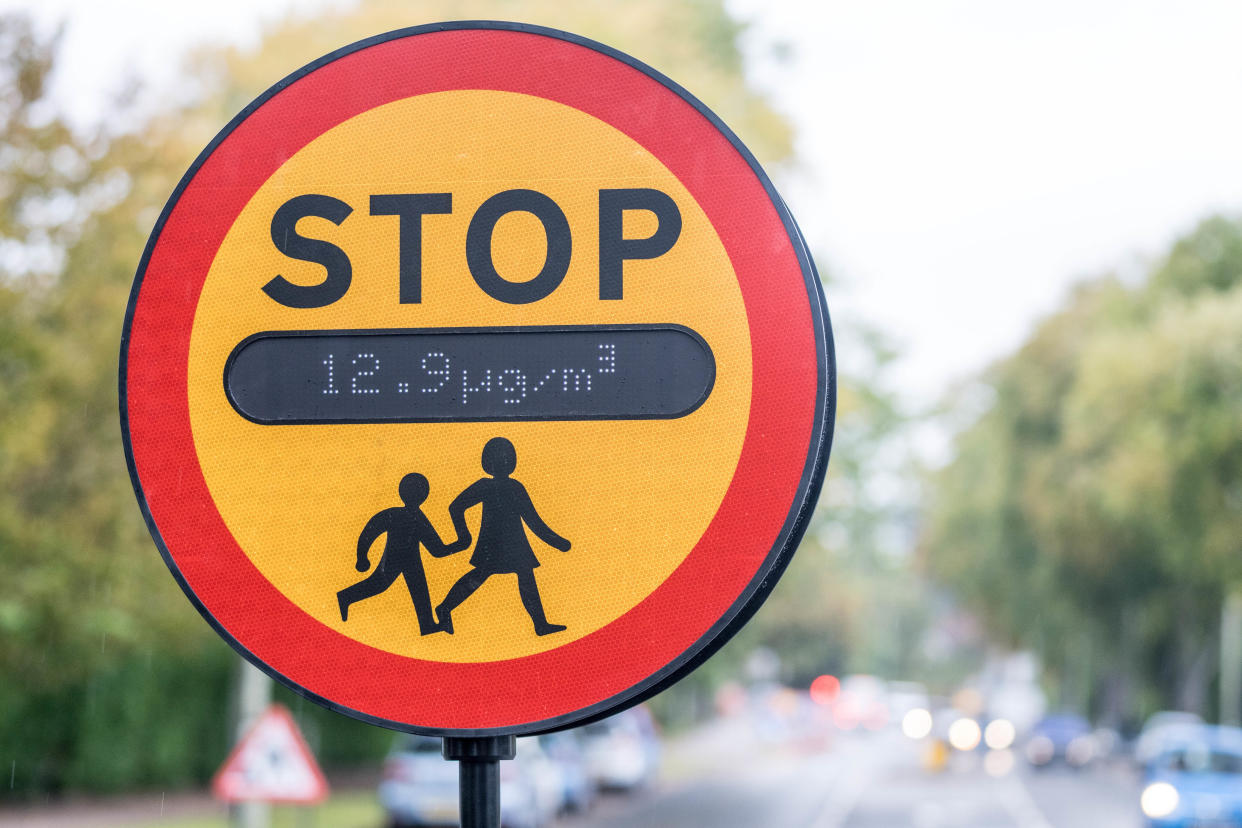Renault crossing ‘lollipop’ measures air quality levels during the school run

Renault has created an innovative school crossing ‘lollipop’ which can measure air quality levels.
A display on the side of the lollipop displays the exact concentration of fine particulates in the air – known as PM2.5 – measured via an in-built air sensor. The pollution level is then relayed in real time to road users.

On the opposite side of the board is a simple measure which showcases whether or not the air quality is ‘good’, ‘okay’ or ‘poor’. The easy-to-read parameters are based on boundaries published by the Department for Environment Food and Rural Affairs (DEFRA).
The lollipop was put to the test outside a school in Bedford on a road with two schools and a college. Between 7:00am and 7:45am, it recorded air pollution figures of between 2.5 μg/m3 and 14.7 μg/m3 – seen as low by DEFRA and displayed as ‘good’ on the lollipop.
However, by 8am the figure had quickly risen to 25.7 μg/m3 thanks to increased traffic levels. This figure exceeds the current UK legal limit and, as the school run progressed, it continued to rise.
Matt Shirley, Senior Manager, electrification & new mobility, Renault UK, said: “The lollipop has been the symbol of road safety for decades. Today, safety is not just about how to cross a road, it is also about how safe the air is that our children breathe going in and out of schools on a daily basis.

“The adoption of electric vehicles is a journey, but in the meantime, it’s important that we all do our bit and don’t leave our engines running unnecessarily.”
An idling engine pushes out the equivalent to 150 party balloons-worth of emissions into the atmosphere every minute. A survey of 4,000 people conducted by Renault as part of its ‘Be Mindful, Don’t Idle’ campaign found that 50 per cent of people in urban areas admitted to idling, compared with 12 per cent of people in rural areas. More than 28 per cent of people admitted to leaving their engines running for between six and 10 minutes.


